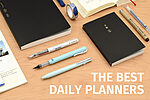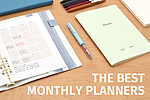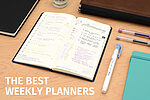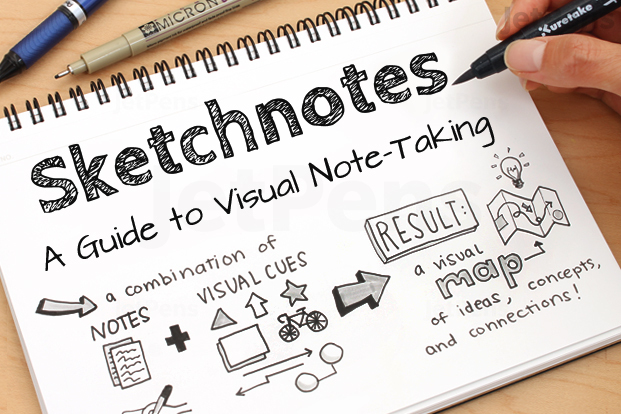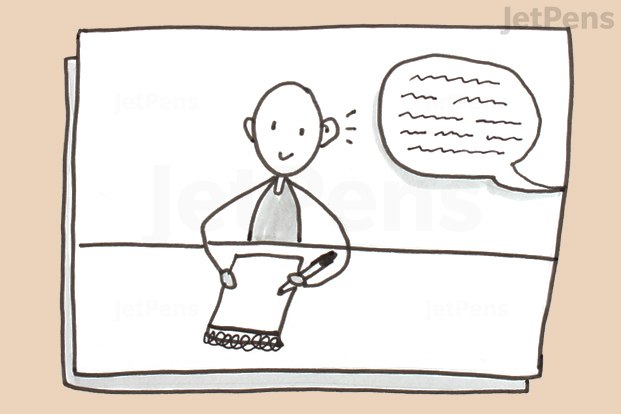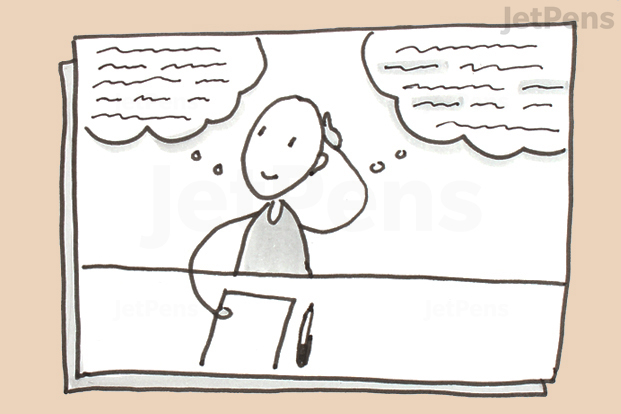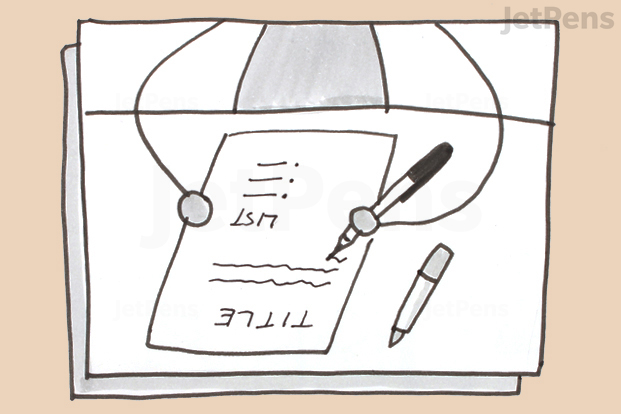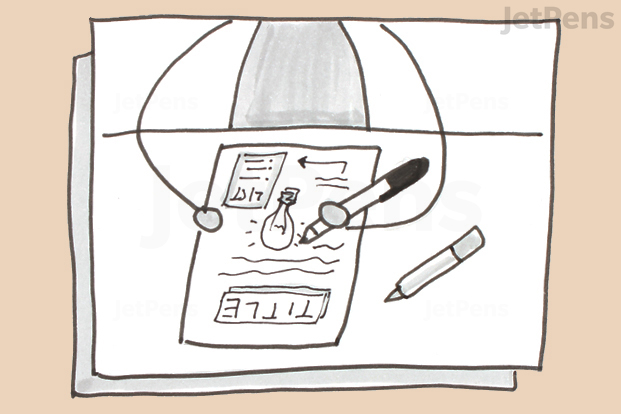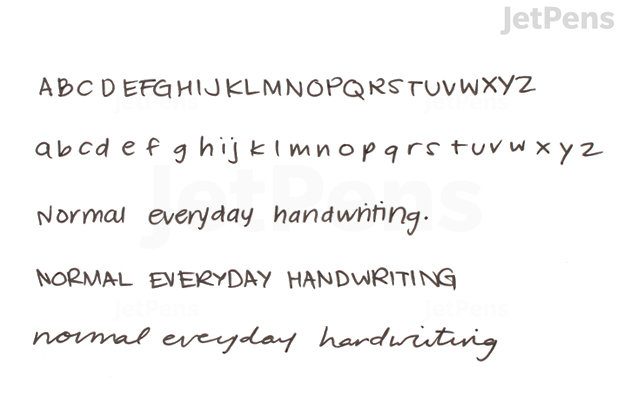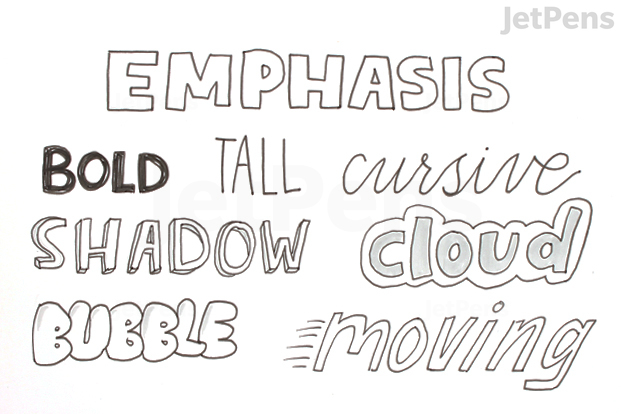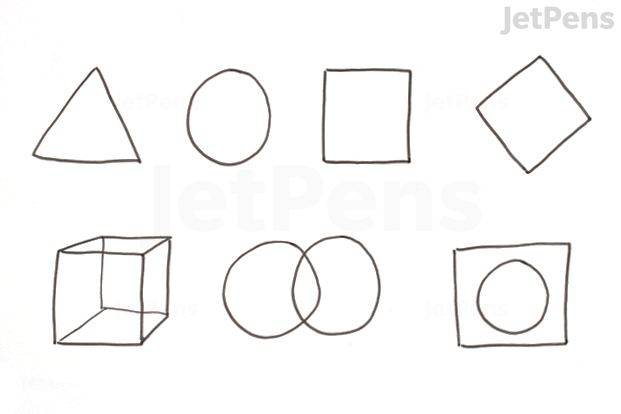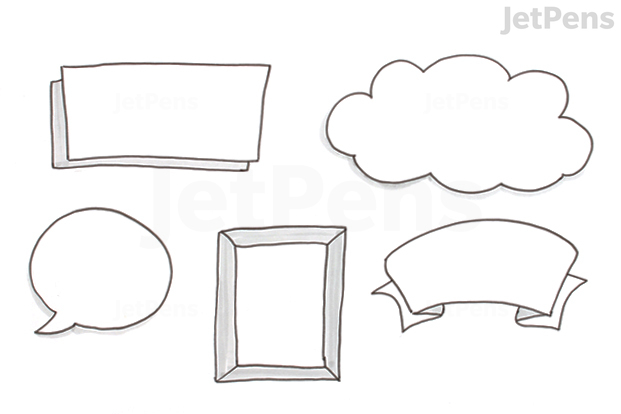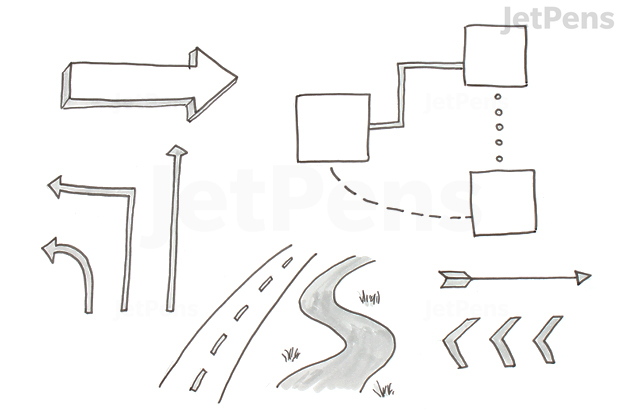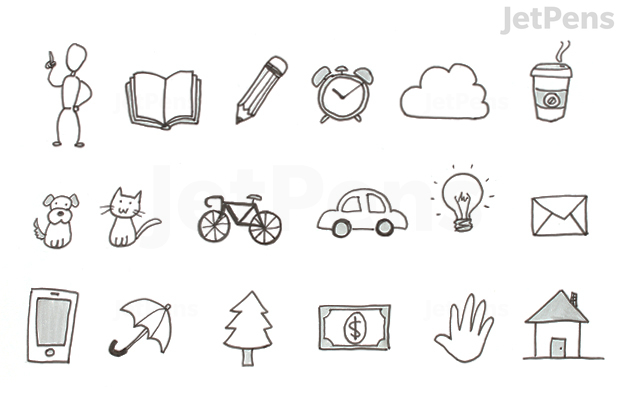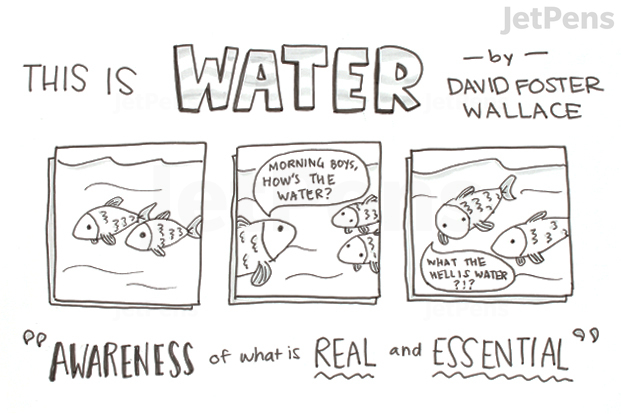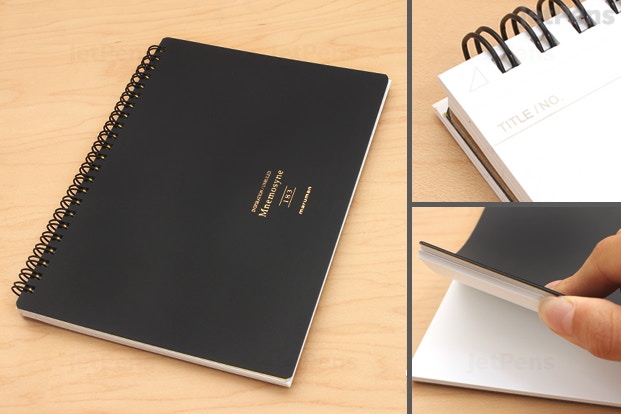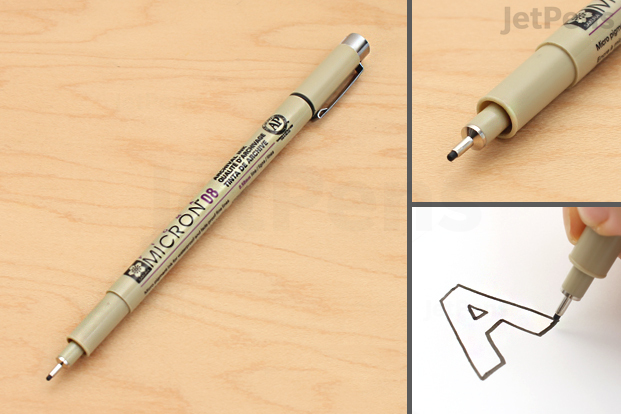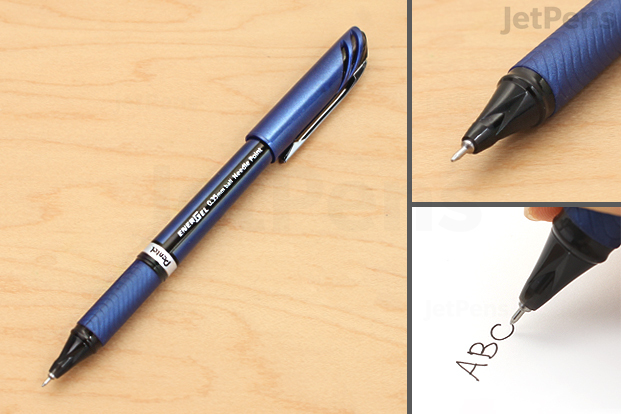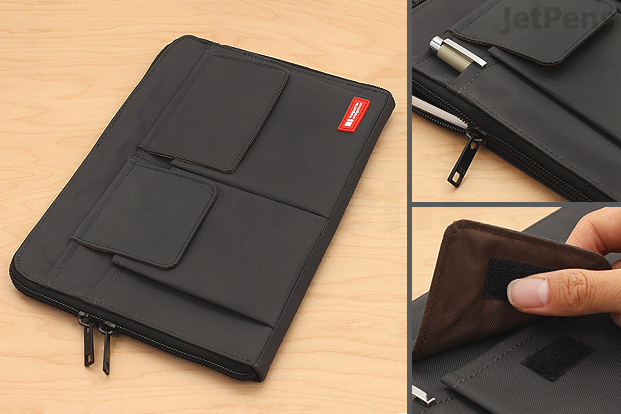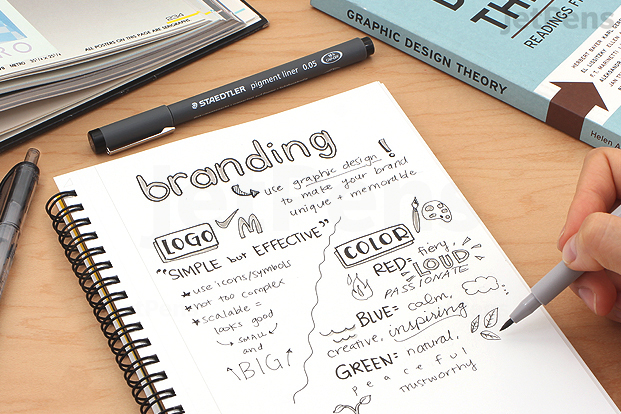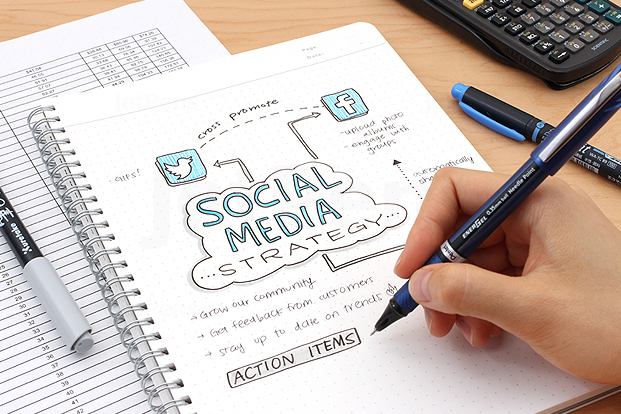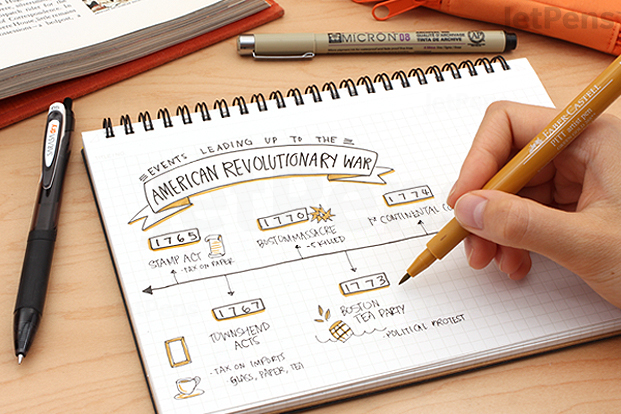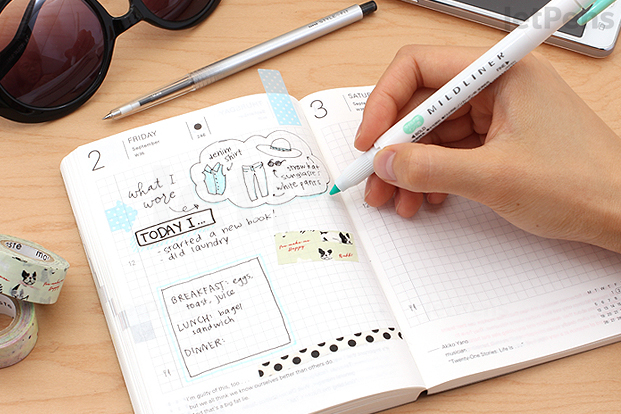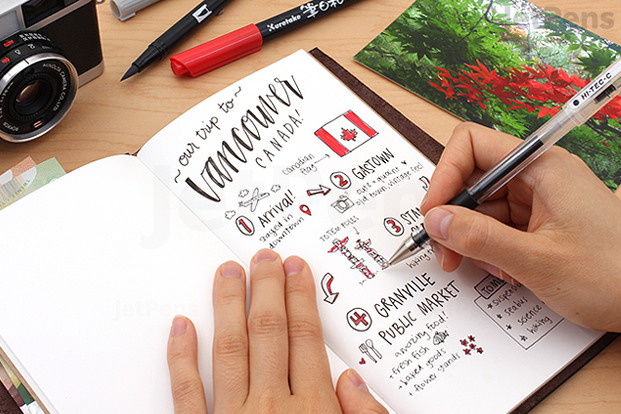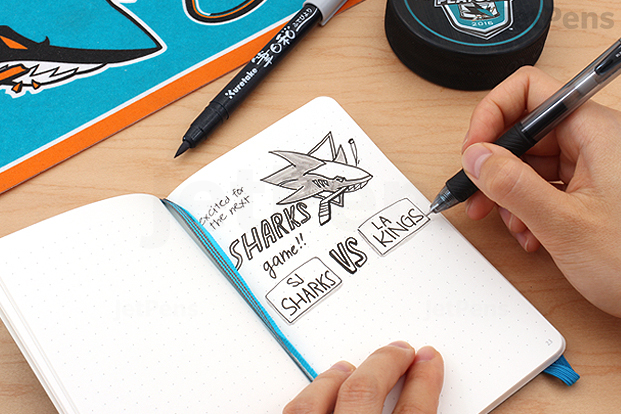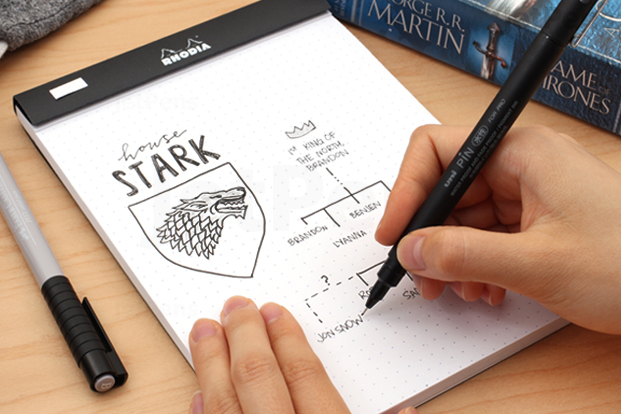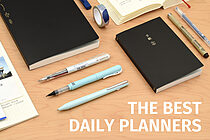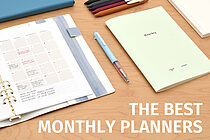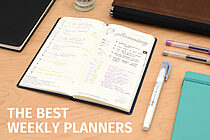If you’re a visual learner with a passion for pens and paper, the sketchnote method is perfect for you. Sketchnoting combines traditional handwritten notes with drawings, symbols, and other creative elements. The result is an engaging map of ideas with clear visual cues.
With sketchnotes, you can:
- Use visual cues to boost memory retention
- Keep your brain active and engaged with variety and stimulation
- Develop ideas more comprehensively by creating connections between points
- Make your notes more compact and easier to review at a glance
The term "Sketchnote" was first coined by designer and author Mike Rohde. Mike has written two books on sketchnotes and leads an active community of enthusiasts called the Sketchnote Army.
In this guide, we introduce basic techniques, recommend some supplies to get you started, and interview Mike Rohde himself about the history of sketchnotes.
Sketchnote Supplies
Sketchnotes can be created using whatever materials you have on hand. You never know when inspiration will strike, so it’s perfectly fine to use a free hotel pen and a cocktail napkin to capture that brilliant idea. However, having a designated set of sketchnote supplies will keep your notes organized and visually consistent. Quality materials will also look more professional in a business setting, and make your sketchnoting experience more enjoyable.
Notebook
A blank, plain paper notebook is best. Avoid ruled notebooks because the lines are too rigid and may get in the way of your sketches. Graph and dot grid notebooks are good alternatives if you prefer your sketchnotes to be nicely aligned, but be aware that the grid may limit your creativity.
Black Ink Pens
Because you will be jotting down notes at a fast pace, choose black ink pens that can write quickly without skips or stalls. Avoid pens and markers that may smear or bleed through to the next page.
Emphasis Pen
To add depth and dimension to your sketchnotes, you will need a marker pen that can quickly add emphasis to important points. Most commonly, the emphasis pen is a gray marker that can add shading to letters and sketches. It can also be a highlighter or accent color, such as blue or orange, but avoid using too many colors in one sketchnote.
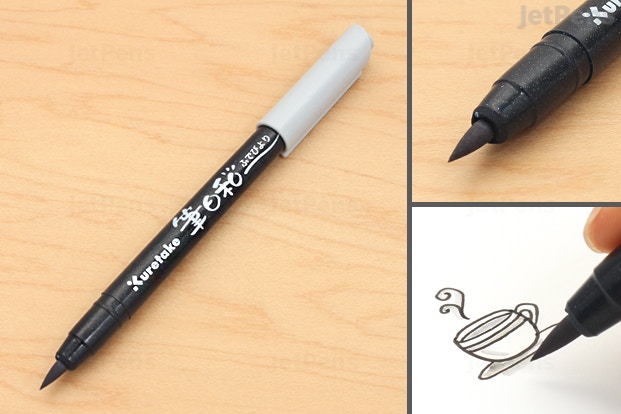
With its versatile brush tip, the Kuretake Fudebiyori allows you to quickly add shadows or accents to your sketchnotes. Use the very tip of the brush to fill in small spaces, and use the side of the brush tip to cover larger areas. The light gray color is unobtrusive and easy on the eyes, while still providing an eye-catching visual effect.
Also Consider:Zebra Mildliner Highlighters, Faber-Castell Pitt B Brushes
Carrying Case
If you are traveling on a business trip or running across campus to your next class, you’ll need to keep your sketchnote essentials together in a compact, organized way. Using a carrying case ensures that your supplies will be ready whenever you are.
Interview with Sketchnote Creator Mike Rohde
Mike Rohde is a Milwaukee-based designer, author, and innovator who pioneered the sketchnote method. We asked him a few questions about the history of sketchnotes, his favorite tools, and some tips for beginners.
You can read more about Mike's sketchnote story over at his official website. You can also see curated sketchnotes from all over the world at Sketchnote Army.
How did you first start sketchnoting?
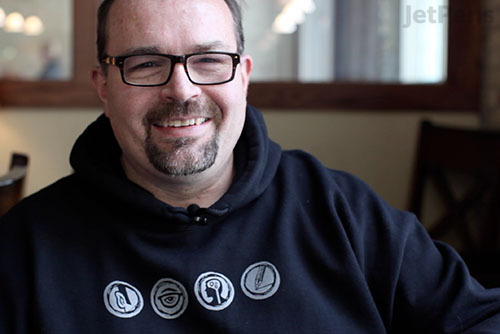
Mike Rohde, creator of the sketchnote method
I started sketchnoting about 9 years ago. At that point, I hated note-taking, even though I was really good at it. I tried to capture every detail of the meetings and events I attended by using large, lined notebooks and writing with a pencil (so I could fix mistakes).
The problem was, this type of court reporter note-taking was stressful, because I felt I was always missing something. It was clear I needed to change, so my solution was to fashion some constraints for myself and my note-taking.
As a designer, I always work within constraints, and that’s what makes for the most fun and most interesting of solutions. It was the same for my notes. I chose to switch from a large, lined book and a pencil, to a pocket-sized book and a pen.
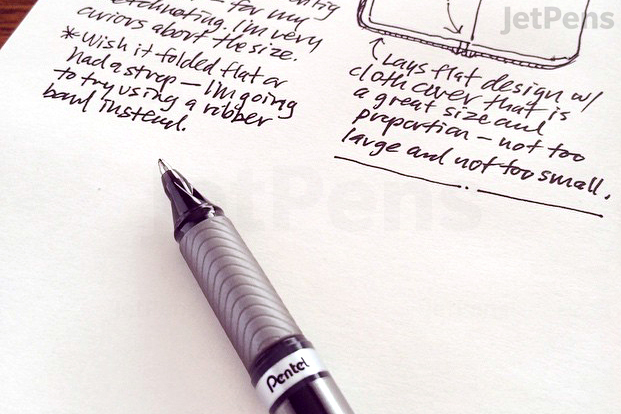
Mike's personal sketchnotes
I literally could not take the detailed notes I was creating, and the pen forced me to be deliberate about what I was going to capture. This led me to analyzing talks live on the spot, and incorporating drawings and lettering to make my notes more interesting than lines of gray text.
I had so much fun within these constraints, I kept using the new technique, and here we are 7 years later with 2 books, a vibrant community and most importantly— lots of other people using sketchnotes to break out of their note-taking ruts.
Did you coin the term "Sketchnote"? If so, how did this come about?
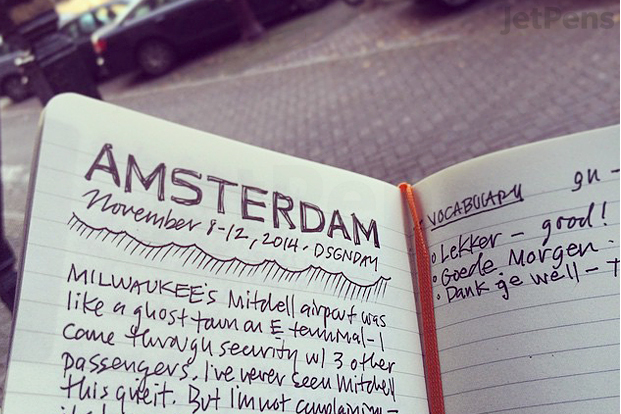
Travel sketchnotes from Amsterdam.
I did coin the word. As I was exploring on this new note-taking approach which included images and words as partners to capture ideas, It seemed natural to describe that combination as a “sketchnote.” I used sketchnote to describe what I was doing, and the name stuck.
The word "sketchnote" works well, because it combines the idea of both image and text in a single word. When you say "sketchnote" you are describing what a sketchnote is—which I love!
What inspired you to write a book about sketchnotes?
People like my good friend Patrick Rhone kept asking for a guide to sketchnoting, because nothing existed at the time. I'd been thinking about ways to capture my experiences over the past 5 years, and a book had crossed my mind. However, I wasn't certain where or how to start, so it went on the back burner for a while.
While visiting my friend Von Glitschka in Portland, Oregon, he convinced me I should write a book on sketchnoting Over dinner. He emailed his editor, Nikki McDonald, right after dinner, she loved the book Idea and the rest is history!
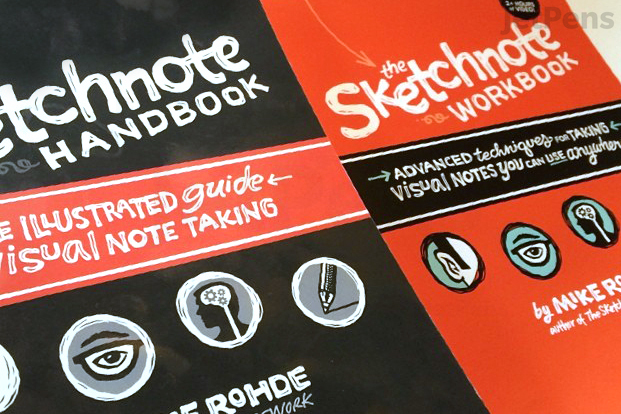
Mike has published two sketchnote books.
The two books I wrote,
The Sketchnote Handbook and
The Sketchnote Workbook, were two of the hardest, yet most satisfying projects I've ever undertaken. They pushed me to my limits, because I wrote, illustrated, managed sketchnote submissions, and did all of the final print production on both books.
I'm so proud of how they've turned out and the impact they've had on the world, especially with translations of the books into German, Russian, Czech, Chinese and French.
What are your personal favorite sketchnote tools?
Favorite Pens and Pencils:
Favorite Sketchbooks:
Favorite Notebooks:
What is your favorite item to sketchnote?
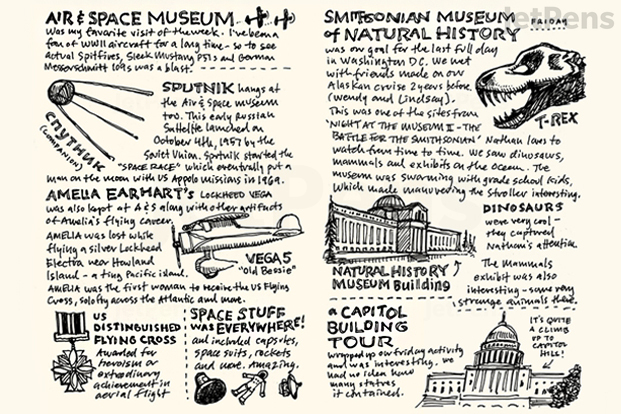
Sketchnotes from a trip to Washington, D.C.
I love sketchnoting experiences, especially travel experiences. I find the detail I can recall later on by sketchnoting travel makes the effort to capture sketchnotes worth the time.
Very often I won’t sketchnote much on the spot, but I do occasionally. Mainly I take notes and photos as the day unfolds, then spend time in my hotel reconstructing the day’s events with writing and drawing using photos and notes for reference. I get to re-live each day that way, which is enjoyable.
The benefit years later is a rich, visual record of a travel experience that I can jump back into, or share with my kids, or grandkids some day.
How has sketchnoting improved your productivity and workflow?
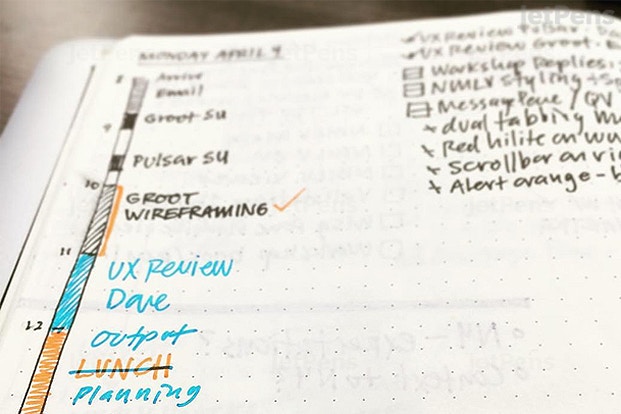
Mike uses sketchnotes to plan and schedule events.
I am using sketchnotes at work to record my daily activities, to capture meeting notes and help the developers on my software team work through ideas on the whiteboard. Sketchnotes just seem to leak out!
Personally, I like to keep a logbook in a Hobonichi Techo to capture my daily activities and often those take the form of sketchnotes. Having a visual record like that seems to capture my days in a way only text doesn’t, and makes review of the year more interesting and impactful.
Do you think sketchnoting should be taught in schools?
I do think there is a place for them in schools, and I am seeing more and more teachers bringing them in for just that reason— which is very exciting. A few weeks ago I taught 24 engineering professors at Marquette University how to sketchnote, and they had a blast. They were already talking about integrating sketchnotes into their curriculums when the workshop was only half done!
I think it’s a valuable skill that can help many students capture attention and use the natural skills for visualization to learn. To suppress that ability seems a shame, so I definitely encourage sketchnoting in school settings.
What do you see for the future of sketchnoting?
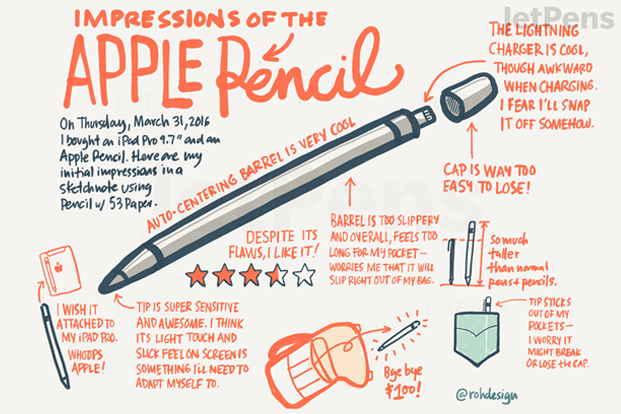
Digital sketchnotes created with an Apple Pencil
I see more movement into education, and an expansion with new digital tools like the iPad Pro and Apple Pencil.
I’ve been experimenting with the iPad and find it very powerful, but personally it feels more like an extension of my analog tools rather than a replacement. I love pens, pencils and paper too much to abandon them!
Do you have any sketchnoting advice for beginners?
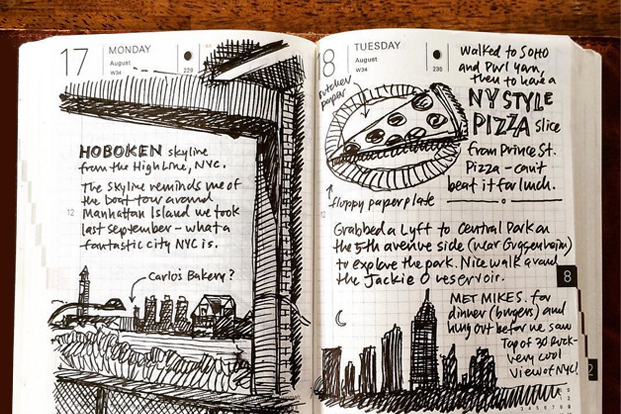
Travel sketchnotes from New York City
My two biggest pieces of advice for someone new to sketchnoting:
1. Give yourself lots of grace as you learn.
2. Practice, practice, practice!
It’s challenging if you haven’t drawn for a while, and I know you are likely a harder critic of your own work (I know I am). Give yourself a large dose of grace, because it’s likely you won’t feel that your work is perfect.
But remember that it’s about the process—know that you will improve! I think practice is the way to improve. Keep working on your skills, and you will see it become more natural over time. There is no replacement for practice. I’ve found as I keep moving, I improve slowly and surely, and you can too.
A Final Note
While the term “Sketchnoting” first emerged among attendees at design conferences, it has since spread beyond the graphic design community to schools, professional settings, and beyond. The next time you need to remember something, consider picking up your favorite sketching supplies and trying the sketchnote method.
Have you tried sketchnoting? Do you currently use sketchnotes in your day-to-day life? Share your experience by leaving a comment below!
| Product Type | Recommendation | Product Highlights |
| Notebook |
Maruman Mnemosyne Inspiration Notebook |
Durable lay-flat binding, smooth paper, clean and minimal style |
| Notebook |
Leuchtturm1917 Softcover Medium Notebooks |
Slim size, variety of page formats, ribbon bookmark, elastic closure |
| Notebook |
Rhodia No. 16 Pads |
Portable A5 size, top-bound format is good for left-handed writers |
| Drawing Pen |
Sakura Pigma Micron Drawing Pens |
Crisp bleed-free lines, various tip sizes and colors, archival quality ink |
| Drawing Pen |
Staedtler Pigment Liner Drawing Pens |
Permanent, acid-free, fade-resistant, and archival-quality ink |
| Drawing Pen |
Uni Pin Pens |
Precision tip sizes, markerproof, waterproof, fade-resistant |
| Drawing Pen |
Ohto Graphic Liner Needle Point Drawing Pens |
Sturdy and wear-resistant metal rollerball tip, archival quality ink |
| Gel Pen |
Pentel EnerGel Euro Gel Pens |
Quick-drying EnerGel ink, comfortable rubber grip |
| Gel Pen |
Uni-ball Signo RT UMN-103 Gel Pens |
Retractable tip, comfortable rubber grip, water-based pigment gel ink |
| Gel Pen |
Zebra Sarasa Dry Gel Pens |
Quick-drying ink, sturdy binder clip for attaching to papers and notebooks |
| Emphasis Pen |
Kuretake Fudebiyori Brush Pen |
Springy and flexible brush tips, light gray color is subtle and easy on the eyes |
| Emphasis Pen |
Faber-Castell Pitt Artist Pens B Brush |
Large variety of available colors, pigmented and lightfast ink |
| Emphasis Pen |
Zebra Mildliner Double-Sided Highlighters |
Soft and subtle colors, twin tips for both highlighting and writing |
| Carrying Case |
Lihit Lab Teffa Bag in Bags |
Sturdy construction, large zippered compartment, smaller velcro pockets |
| Carrying Case |
Sun-Star Mitte Bag in Bags |
Compact size for holding pens and markers, interior pockets, transparent design |
| Carrying Case |
Kokuyo Bizrack Up Bag in Bags |
Plenty of compartments, good size for laptops, iPads, or tablets |




